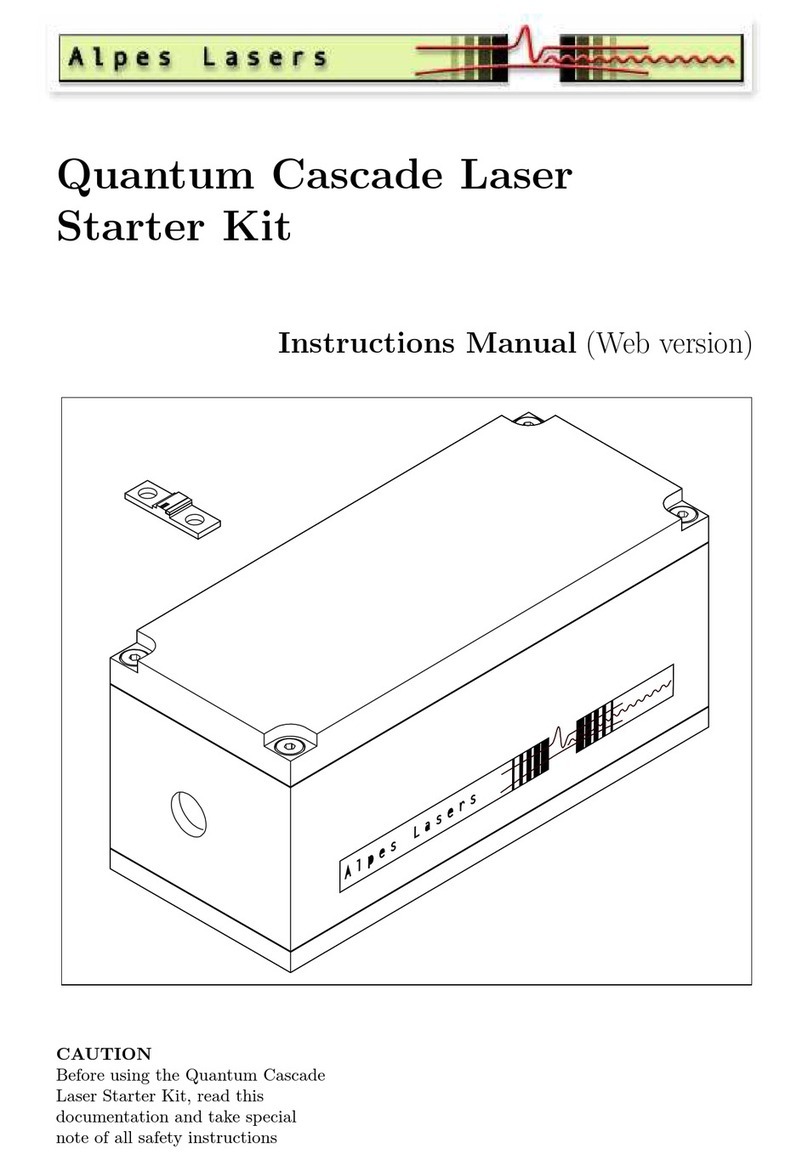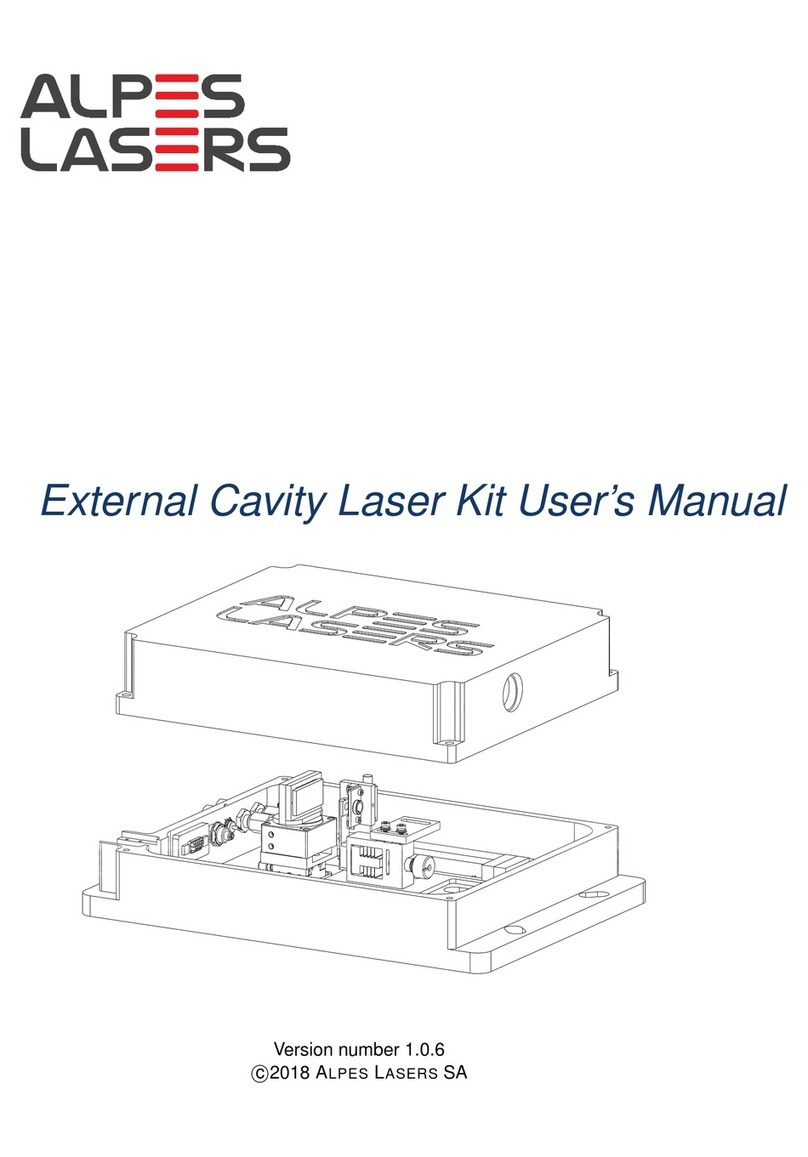
3.3. Connections . . . . . . . . . . . . . . . . . . . . . . . . . . . . . . . . 31
3.3.1. LLH . . . . . . . . . . . . . . . . . . . . . . . . . . . . . . . . . 33
3.3.2. HHL ................................ 34
3.3.3. TO3 ................................ 35
3.3.4. LDD ................................ 36
3.3.5. CTL cable . . . . . . . . . . . . . . . . . . . . . . . . . . . . . 37
3.3.6. CTLm cable . . . . . . . . . . . . . . . . . . . . . . . . . . . . 38
3.3.7. TC-LLH cable . . . . . . . . . . . . . . . . . . . . . . . . . . . 39
3.3.8. TC-HHL cable . . . . . . . . . . . . . . . . . . . . . . . . . . . 39
3.3.9. CPL cable . . . . . . . . . . . . . . . . . . . . . . . . . . . . . 39
3.3.10. CIL cable . . . . . . . . . . . . . . . . . . . . . . . . . . . . . . 41
3.3.11. Connection procedure . . . . . . . . . . . . . . . . . . . . . . . 42
4. QCL Operation 45
4.1. Principle of operation . . . . . . . . . . . . . . . . . . . . . . . . . . . 46
4.2. ALPES LASERS datasheet . . . . . . . . . . . . . . . . . . . . . . . . . 47
4.3. QCL spectra . . . . . . . . . . . . . . . . . . . . . . . . . . . . . . . . 48
4.3.1. Temperature and current tuning . . . . . . . . . . . . . . . . . 48
4.3.2. Linewidth of pulsed single-mode DFB QCLs . . . . . . . . . . . 51
4.3.3. Linewidth of CW single-mode DFB QCLs . . . . . . . . . . . . 51
4.3.4. Bandwidth of multi-mode FP QCLs . . . . . . . . . . . . . . . . 52
4.4. I-V curve and emitted power . . . . . . . . . . . . . . . . . . . . . . . 52
4.4.1. Maximum operating current . . . . . . . . . . . . . . . . . . . . 54
4.4.2. Maximum LDD voltage . . . . . . . . . . . . . . . . . . . . . . 55
4.4.3. Other DFB QCL plots . . . . . . . . . . . . . . . . . . . . . . . 56
4.5. Beam Properties . . . . . . . . . . . . . . . . . . . . . . . . . . . . . 57
5. Starter Kit Operation 59
5.1. Temperature Controller TC-3 . . . . . . . . . . . . . . . . . . . . . . . 60
5.1.1. Quick Start Procedure . . . . . . . . . . . . . . . . . . . . . . . 60
5.2. Temperature Controller Unit (TCU) . . . . . . . . . . . . . . . . . . . 63
5.2.1. TCU startup . . . . . . . . . . . . . . . . . . . . . . . . . . . . 65
5.2.2. Internal/external mode . . . . . . . . . . . . . . . . . . . . . . 65
5.2.3. TCU interlock . . . . . . . . . . . . . . . . . . . . . . . . . . . 66
5.3. TTL Pulse Generator (TPG) . . . . . . . . . . . . . . . . . . . . . . . 67
5.3.1. Internal and external modes . . . . . . . . . . . . . . . . . . . 68
5.3.2. Setting the pulse parameters . . . . . . . . . . . . . . . . . . . 70
5.3.3. Maximum duty cycle . . . . . . . . . . . . . . . . . . . . . . . . 71
5.4. S-2 Pulser (S-2) . . . . . . . . . . . . . . . . . . . . . . . . . . . . . . 72
5.4.1. Internal Control . . . . . . . . . . . . . . . . . . . . . . . . . . 73
5.4.2. External Control . . . . . . . . . . . . . . . . . . . . . . . . . . 76
5.5. General procedures . . . . . . . . . . . . . . . . . . . . . . . . . . . . 78
5.5.1. QCL startup . . . . . . . . . . . . . . . . . . . . . . . . . . . . 78
5.5.2. QCL shutdown . . . . . . . . . . . . . . . . . . . . . . . . . . . 81
viii QCL user’s manual v3.1.8





























